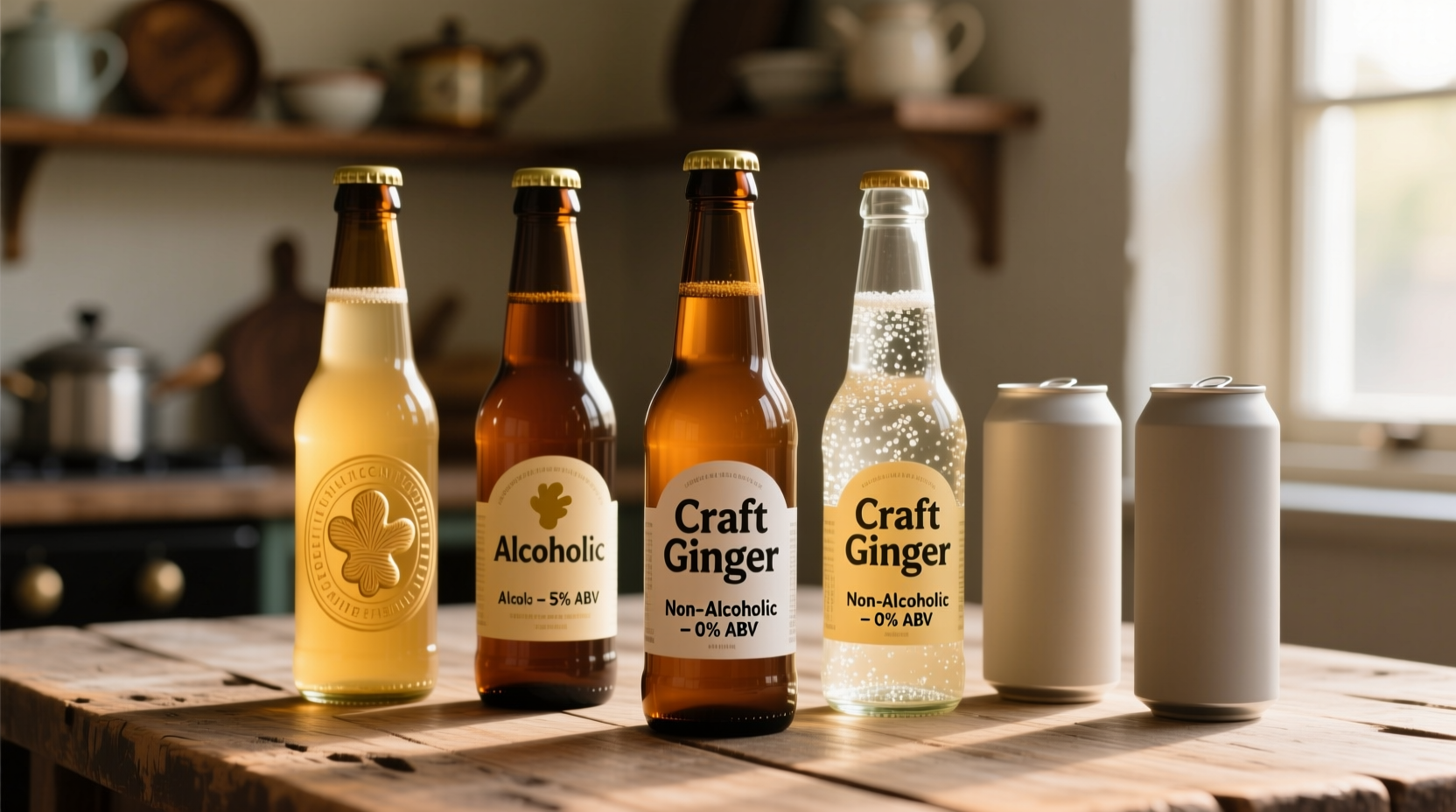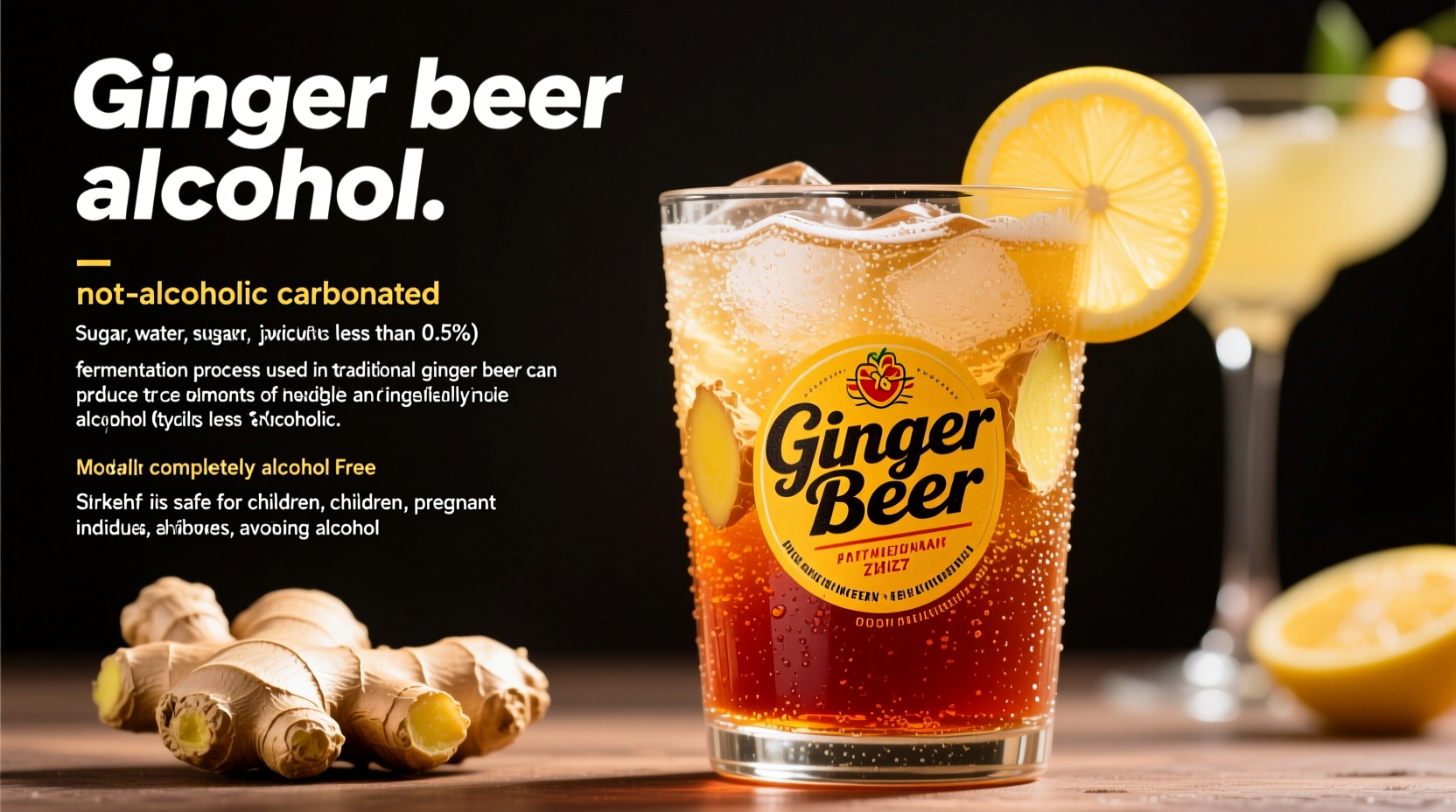Confused about whether your favorite ginger beverage contains alcohol? You're not alone. With the rise of craft 'hard' ginger beers alongside traditional non-alcoholic versions, understanding what's actually in your bottle has become essential for health-conscious consumers, parents, and those avoiding alcohol for religious or personal reasons.
Understanding Ginger Beer's Alcohol Content: What You Need to Know
Ginger beer's alcohol status depends entirely on its production method. Unlike ginger ale, which is always carbonated and non-alcoholic, ginger beer has a complex history that explains today's confusion. Let's break down exactly what determines whether your ginger beer contains alcohol.
Why Ginger Beer Confuses So Many Consumers
The term "beer" in ginger beer creates immediate confusion. Historically, ginger beer was indeed an alcoholic beverage made through natural fermentation. Before modern carbonation techniques, producers relied on yeast fermenting sugar to create both flavor and carbonation. This traditional method produced ginger beer with 2-11% alcohol content, similar to wine.
Today's commercial production has largely replaced fermentation with forced carbonation, creating non-alcoholic versions that maintain the distinctive spicy flavor without significant alcohol. However, the craft beverage movement has revived traditional fermentation methods, creating a new category of alcoholic "hard" ginger beer.
| Ginger Beverage Type | Production Method | Typical ABV | Label Indicators |
|---|---|---|---|
| Traditional Ginger Beer | Natural fermentation | 2-11% | "Fermented," "Craft," no %ABV listed |
| Commercial Ginger Beer | Forced carbonation | <0.5% | "Non-alcoholic," "0.0% alcohol" |
| Hard Ginger Beer | Controlled fermentation | 4-11% | "Alcoholic," %ABV clearly displayed |
| Ginger Ale | Forced carbonation | 0% | Always non-alcoholic |
Ginger Beer Evolution: From Alcoholic Tonic to Modern Beverage
Ginger beer's journey explains much of today's confusion. Understanding this timeline helps clarify why some versions contain alcohol while others don't:
- 1700s-1800s: Originated in England as a fermented beverage using "ginger beer plant" (a symbiotic culture of yeast and bacteria). This traditional method produced 3-11% ABV.
- Early 1900s: Became popular in America as a non-alcoholic alternative during Prohibition, using forced carbonation instead of fermentation.
- Late 1900s: Mass production standardized non-alcoholic versions, with major brands like Canada Dry and Bundaberg producing both alcoholic and non-alcoholic variants.
- 2010s-Present: Craft beverage movement revived traditional fermentation methods, creating the "hard" ginger beer category now found in liquor stores.

When Ginger Beer Contains Alcohol: Practical Guidance
Not all ginger beer is created equal. Here's how to determine if your beverage contains alcohol:
Check These Label Indicators
- Alcohol by Volume (ABV) percentage: Anything above 0.5% ABV is considered alcoholic in most countries
- Product name: "Hard ginger beer" always contains alcohol
- Sales location: If purchased in the liquor section, it contains alcohol
- Ingredients: "Fermented" or "brewed" suggests potential alcohol content
Special Considerations for Specific Situations
For parents serving children: Standard commercial ginger beer (<0.5% ABV) is generally considered safe for children, similar to ripe bananas or fruit juice which naturally contain trace alcohol. However, if you're strictly avoiding all alcohol, look for products labeled "0.0% alcohol".
For religious restrictions: Some religious traditions prohibit even trace alcohol. In these cases, seek products specifically labeled "alcohol-free" rather than just "non-alcoholic," as non-alcoholic can legally contain up to 0.5% ABV in many regions.
For homemade versions: Traditional homemade ginger beer using fermentation will contain alcohol. The longer it ferments, the higher the alcohol content. Most recipes produce 2-4% ABV after 2-3 days of fermentation.
What Science Says About Ginger Beer Alcohol Content
According to the U.S. Food and Drug Administration, beverages containing less than 0.5% alcohol by volume can be labeled as "non-alcoholic." This explains why most commercial ginger beer falls into this category despite potentially containing trace amounts.
Research published in the American Journal of Clinical Nutrition confirms that beverages with less than 0.5% ABV have no measurable physiological effects typically associated with alcohol consumption. This scientific consensus supports considering standard ginger beer as effectively alcohol-free for practical purposes.
Practical Tips for Confident Shopping
Follow these steps to ensure you get the ginger beverage that matches your needs:
- Read the front label carefully: Look for "hard," "alcoholic," or "non-alcoholic" designations
- Check the alcohol content: Scan for ABV percentage in the nutrition facts
- Consider the store location: Products in the soda aisle are typically non-alcoholic; those in the beer/wine section contain alcohol
- Research brands: Some brands like Reed's produce both alcoholic and non-alcoholic versions
- When in doubt, contact the manufacturer: Most companies provide clear information about alcohol content
Understanding these distinctions empowers you to make informed choices whether you're avoiding alcohol completely, monitoring intake for health reasons, or simply curious about what's in your drink. The key takeaway remains: most commercial ginger beer is non-alcoholic, but always verify by checking the label for specific alcohol content.











 浙公网安备
33010002000092号
浙公网安备
33010002000092号 浙B2-20120091-4
浙B2-20120091-4